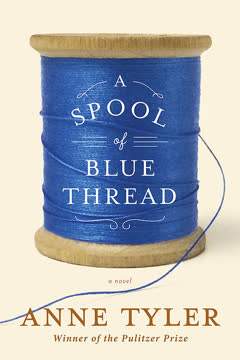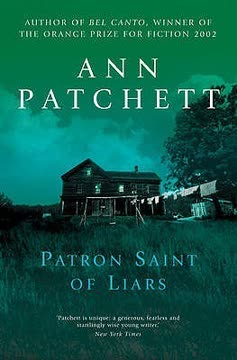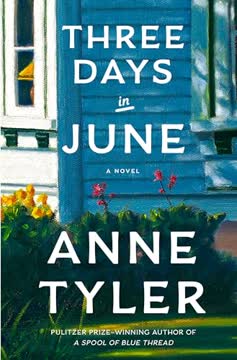Plot Summary
The Call That Fractures
On a humid July night in 1994, Red and Abby Whitshank's world is upended by a phone call from their son, Denny. He abruptly announces he is gay, then hangs up, leaving his parents reeling in confusion and worry. The call exposes the fault lines in their family: Red's brusque practicality clashes with Abby's anxious, nurturing nature. Their conversation spirals into blame and self-doubt, each questioning their parenting and the distance that has grown between them and Denny. The moment is emblematic of the Whitshank family's struggle to communicate, to accept, and to understand one another. The call lingers, unresolved, setting the tone for years of uncertainty and longing that will ripple through the family's story.
Denny's Vanishing Act
Denny's life becomes a series of absences and brief, enigmatic returns. He skips family vacations, changes jobs and addresses, and keeps his family at arm's length. His parents, especially Abby, are left to interpret his silences and piece together his life from fragments—postcards, phone calls, rumors. Denny's restlessness and secrecy become a source of pain and speculation, as the family wonders what they did wrong and how to reach him. His brief marriage, the birth of his daughter Susan, and his subsequent disappearance from her life only deepen the mystery. Denny's vanishing act is both a rebellion and a cry for connection, a pattern that will haunt the Whitshanks for decades.
The House on Bouton Road
The Whitshank home on Bouton Road is more than a setting—it is the family's heart, a symbol of their aspirations and disappointments. Built by Red's father, Junior, the house is a testament to craftsmanship and longing, a place where generations gather, argue, and seek solace. Its rooms are filled with memories, secrets, and the echoes of family stories. The house's solidity contrasts with the instability of the people who inhabit it, offering a sense of continuity even as the family's bonds are tested. The house is both a refuge and a burden, a character in its own right whose fate is intertwined with the Whitshanks' own.
Family Stories Retold
The Whitshank family is shaped by two oft-repeated stories: how Junior fell in love with the house he built for another man, and how Merrick, Red's sister, "stole" her best friend's fiancé. These tales are told and retold, embroidered and mythologized, serving as both a source of pride and a subtle warning. They reveal the family's values—patience, envy, the pursuit of what is just out of reach—and their blind spots. The stories are a way of making sense of the past, but they also trap the family in patterns of disappointment and longing. Beneath the surface, unspoken stories—of loss, exclusion, and quiet heartbreak—shape the family just as powerfully.
Abby's Disappearing Self
As the years pass, Abby, once the family's emotional center, begins to fade. She grows forgetful, distracted, and withdrawn, her vibrant personality dimmed by an unnamed cognitive decline. The family struggles to adapt, torn between denial and concern. Abby's lapses—wandering off, forgetting names, losing track of time—are met with a mix of frustration, fear, and tenderness. Her children debate how best to care for her, while Abby herself resists being managed or pitied. Her gradual disappearance is a quiet tragedy, a reminder of the fragility of identity and the inexorable passage of time.
Stem's Secret Origin
Stem, the youngest Whitshank son, is not a Whitshank by blood. Orphaned at two when his father, a workman for Red, dies suddenly, Stem is taken in by Abby and Red. His adoption is never formalized, and his origins are quietly obscured. Stem grows up as one of the family, but his presence is a source of tension, especially for Denny, who resents the way Stem seems to fit in so easily. The truth of Stem's parentage is a secret that shapes his sense of belonging and the family's understanding of itself. When the secret is finally revealed, it forces the Whitshanks to confront the limits of love, loyalty, and the stories they tell about themselves.
The Return of Denny
After years of absence, Denny returns to Baltimore, drawn by Abby's decline and the shifting needs of the family. His presence is both a comfort and a disruption, reigniting old rivalries and resentments. Denny's relationship with Stem is especially fraught, as the two men circle each other warily, each feeling displaced. The family's attempts to care for Abby, manage Red's health, and maintain the house become a crucible for their unresolved conflicts. Denny's return is a chance for reconciliation, but also a reminder of all that has been lost and left unsaid.
Abby's Final Walk
One autumn morning, Abby slips out of the house for a walk and is struck by a car. Her death is sudden, shocking, and leaves the family unmoored. The accident echoes the deaths of Red's parents decades earlier, reinforcing the sense of fate and repetition that haunts the Whitshanks. In the aftermath, the family is plunged into grief, guilt, and confusion. Abby's absence is felt in every corner of the house, every conversation, every decision. Her death forces the family to confront the reality of change, the impermanence of even the most cherished bonds, and the need to find a way forward.
The Funeral and Aftermath
Abby's funeral brings the family together, but also lays bare their divisions. Old grievances resurface, secrets are revealed, and the question of what to do with the house becomes urgent. Red, lost without Abby, contemplates his own mortality and the meaning of home. The children struggle to balance their own lives with their responsibilities to each other and to the past. The funeral is both an ending and a beginning, a moment of reckoning that will shape the family's future.
Junior and Linnie's Legacy
In a sweeping flashback, the story turns to Junior and Linnie, Red's parents, and the early days of the house on Bouton Road. Their marriage, marked by secrets, disappointments, and quiet endurance, sets the template for the family's later struggles. Junior's obsession with the house, Linnie's resilience, and the compromises they make for each other echo through the generations. The legacy they leave is both material—a house, a business—and emotional: a pattern of longing, striving, and never quite belonging. Their story is a reminder that every family is built on both love and loss.
The Blue Thread Unspools
As the family prepares to leave the house, Denny finds a spool of bright blue thread in the closet—just the right color to mend Red's old dashiki. The thread becomes a symbol of the ties that bind the family, the forgiveness that is possible even after years of hurt, and the way small, unexpected moments can offer grace. The act of mending is both literal and metaphorical, a gesture of healing and acceptance. The blue thread unspools through the family's story, connecting past and present, loss and hope.
Letting Go of Home
With Abby gone and Red unable to manage alone, the decision is made to sell the house. The process is painful, filled with memories and second-guessing. Each family member must decide what to take, what to leave, and how to say goodbye. The house, once the center of their world, becomes a relic, its meaning shifting as the family moves on. Letting go is both a loss and a liberation, an acknowledgment that home is not a place but the people who share it.
The Spool in the Closet
As Denny prepares to leave Baltimore, he reflects on the spool of blue thread and the sense of forgiveness it represents. He realizes that both he and Abby have been seeking absolution—from each other, from themselves, from the weight of family history. The thread is a quiet benediction, a reminder that love endures even when it is imperfect, and that the stories we tell can be rewritten. The family's future is uncertain, but the possibility of connection remains.
Ghosts on the Porch
In the final days before the house is sold, the family hangs the traditional Halloween ghosts on the porch one last time. The gesture is both nostalgic and bittersweet, a way of honoring the past even as they prepare to leave it behind. The ghosts are a reminder of all the lives that have passed through the house, all the joys and sorrows that have shaped the Whitshanks. As the family scatters, the ghosts remain, fluttering in the autumn wind—a symbol of memory, loss, and the enduring power of love.
The Next Chapter Begins
With the house sold and the family dispersed, each member faces an uncertain future. Red moves to an apartment, the children return to their own lives, and Denny boards a train back to New Jersey, carrying with him the lessons and wounds of his family's story. The past cannot be undone, but it can be understood, and the possibility of forgiveness offers a way forward. The Whitshanks' story is unfinished, its next chapter waiting to be written.
Characters
Abby Whitshank
Abby is the heart of the Whitshank family—a nurturing, empathetic social worker who gathers "orphans" and misfits into her home, always seeking to heal and connect. Her relationship with her children, especially Denny, is marked by longing and misunderstanding; she loves fiercely but sometimes smothers. As she ages, Abby's mind begins to slip, her vibrant personality dimming into confusion and forgetfulness. Her decline exposes the family's vulnerabilities and forces them to confront their own limitations. Abby's sudden death is a rupture, leaving the family unmoored but also challenging them to find new ways to love and forgive. Her legacy is one of compassion, imperfection, and the enduring power of memory.
Red Whitshank
Red is a man of few words and steady habits, devoted to his work as a contractor and to the house his father built. He is pragmatic, sometimes emotionally distant, and struggles to express affection, especially to Denny. Red's identity is bound up in the maintenance of the family home and the traditions it represents. As Abby declines and then dies, Red is left adrift, forced to confront his own aging and the emptiness of a life without her. His journey is one of reluctant adaptation, learning to let go of the past and accept the changes that come with time. Red's love is quiet but deep, revealed in small acts of care and the rituals that define the Whitshank family.
Denny Whitshank
Denny is the family's mystery—a handsome, troubled man who drifts in and out of their lives, never settling, always keeping secrets. His relationship with his parents is fraught with misunderstanding and resentment, especially as he perceives Stem as a usurper. Denny's pattern of withdrawal and return is both a rebellion and a plea for connection. He is generous but prickly, capable of tenderness but quick to take offense. Denny's journey is one of self-discovery, as he grapples with his own failings and the possibility of forgiveness. His final act—mending Red's shirt with the blue thread—signals a tentative reconciliation with his family and himself.
Stem (Douglas O'Brian) Whitshank
Stem is not a Whitshank by blood, but he is in every other way—a steady, reliable presence who takes on the family's burdens without complaint. Orphaned young and taken in by Abby and Red, Stem grows up in the shadow of Denny's resentment and his own uncertainty about his place in the family. His discovery of his true parentage shakes his sense of identity, but also deepens his understanding of what it means to belong. Stem's goodness is both a gift and a source of tension, as he struggles to reconcile loyalty to his adoptive family with the pain of exclusion. His story is one of quiet endurance and the search for acceptance.
Amanda Whitshank
Amanda is the family's organizer—a lawyer, a mother, and the one who tries to manage the chaos that surrounds the Whitshanks. She is sharp, efficient, and sometimes abrasive, often clashing with her siblings and parents over how best to handle crises. Amanda's need for order masks a deep vulnerability, a longing for recognition and love. She is both critical and caring, quick to judge but also quick to act when needed. Amanda's journey is one of learning to let go, to accept imperfection, and to find grace in the messiness of family life.
Jeannie Whitshank
Jeannie is the middle daughter, a carpenter in the family business and the one who often smooths over conflicts. She is practical, unassuming, and sometimes feels invisible amid the stronger personalities around her. Jeannie's relationship with her father is marked by a desire for approval, while her bond with her siblings is both supportive and competitive. She is the first to sense the family's unraveling and the one who tries to hold them together. Jeannie's story is one of quiet strength, resilience, and the search for her own place in the family narrative.
Junior Whitshank
Junior is Red's father, a self-made man who builds the house on Bouton Road and shapes the family's identity. His obsession with the house is both a source of pride and a symbol of his outsider status—he is always striving to belong, to be recognized, to achieve a kind of perfection that remains elusive. Junior's marriage to Linnie is marked by secrets, disappointments, and a stubborn endurance. His legacy is both material and emotional, setting the pattern for the family's later struggles with envy, exclusion, and the longing for home.
Linnie Mae Whitshank
Linnie is Junior's wife, a woman whose early life is marked by scandal and exile. She is both vulnerable and strong, enduring rejection and hardship with a quiet determination. Linnie's relationship with Junior is complex—she is both his anchor and his burden, the source of his greatest joy and frustration. Her ability to adapt, to find connection, and to forgive shapes the family's story in ways that are often unacknowledged. Linnie's presence lingers in the house and in the family's traditions, a reminder of the power of endurance and grace.
Nora Whitshank
Nora is Stem's wife, a serene and enigmatic presence who moves through the family's chaos with calm and patience. She is an outsider by temperament and background, but her kindness and steadiness make her indispensable. Nora's faith and quiet wisdom offer a counterpoint to the Whitshanks' anxieties and conflicts. She is the one who helps care for Abby, who supports Red, and who offers Denny a moment of understanding in his search for forgiveness. Nora's role is subtle but essential, a reminder that family is made as much by choice as by blood.
Susan Whitshank
Susan is Denny's daughter, a quiet, observant child who moves between her parents' fractured worlds. She is both a source of hope and a reminder of what has been lost. Susan's presence in the family is tenuous, shaped by absence and longing, but she also represents the possibility of renewal. Her relationship with her cousins, her tentative bond with her father, and her place in the family's rituals suggest that the story of the Whitshanks is not yet finished.
Plot Devices
Nonlinear Narrative and Family Myth
Anne Tyler structures the novel with a nonlinear narrative, moving fluidly between past and present, memory and reality. This allows the reader to see the family's story from multiple angles, revealing how the past informs the present and how stories—both told and untold—shape identity. The use of family myths, repeated anecdotes, and flashbacks creates a sense of continuity and inevitability, while also exposing the ways in which memory is selective and self-serving. Foreshadowing is used subtly, with early events echoing later ones, and the house itself serving as a constant, anchoring presence. The blue thread, introduced late in the novel, becomes a powerful symbol of connection, forgiveness, and the possibility of mending what has been broken.
Analysis
Anne Tyler's novel explores the ways in which love, resentment, longing, and forgiveness are woven together across generations. The Whitshanks are both unique and universal—quirky, flawed, and deeply human. The house on Bouton Road stands as a symbol of the family's aspirations and disappointments, a place where stories are made and remade, where secrets are kept and revealed. Tyler's nonlinear narrative invites readers to see how the past shapes the present, how patterns repeat, and how even the most cherished traditions must eventually be let go. The blue thread that appears near the end of the novel is a metaphor for the ties that bind, the possibility of healing, and the grace that can be found in small, unexpected moments. Ultimately, the novel suggests that family is not defined by blood or perfection, but by the willingness to forgive, to endure, and to keep telling the story—even as it changes.
Last updated:
Review Summary
A Spool of Blue Thread received mixed reviews. Many praised Tyler's masterful characterization and exploration of family dynamics, finding the story relatable and poignant. Some readers appreciated the non-linear narrative structure and Tyler's ability to capture everyday life. However, others found the plot slow-paced and uneventful, struggling to connect with the characters. The book's exploration of generational secrets and family history resonated with some readers, while others felt it lacked depth. Overall, opinions varied on whether the novel lived up to Tyler's previous works.
Similar Books
Download PDF
Download EPUB
.epub digital book format is ideal for reading ebooks on phones, tablets, and e-readers.

















